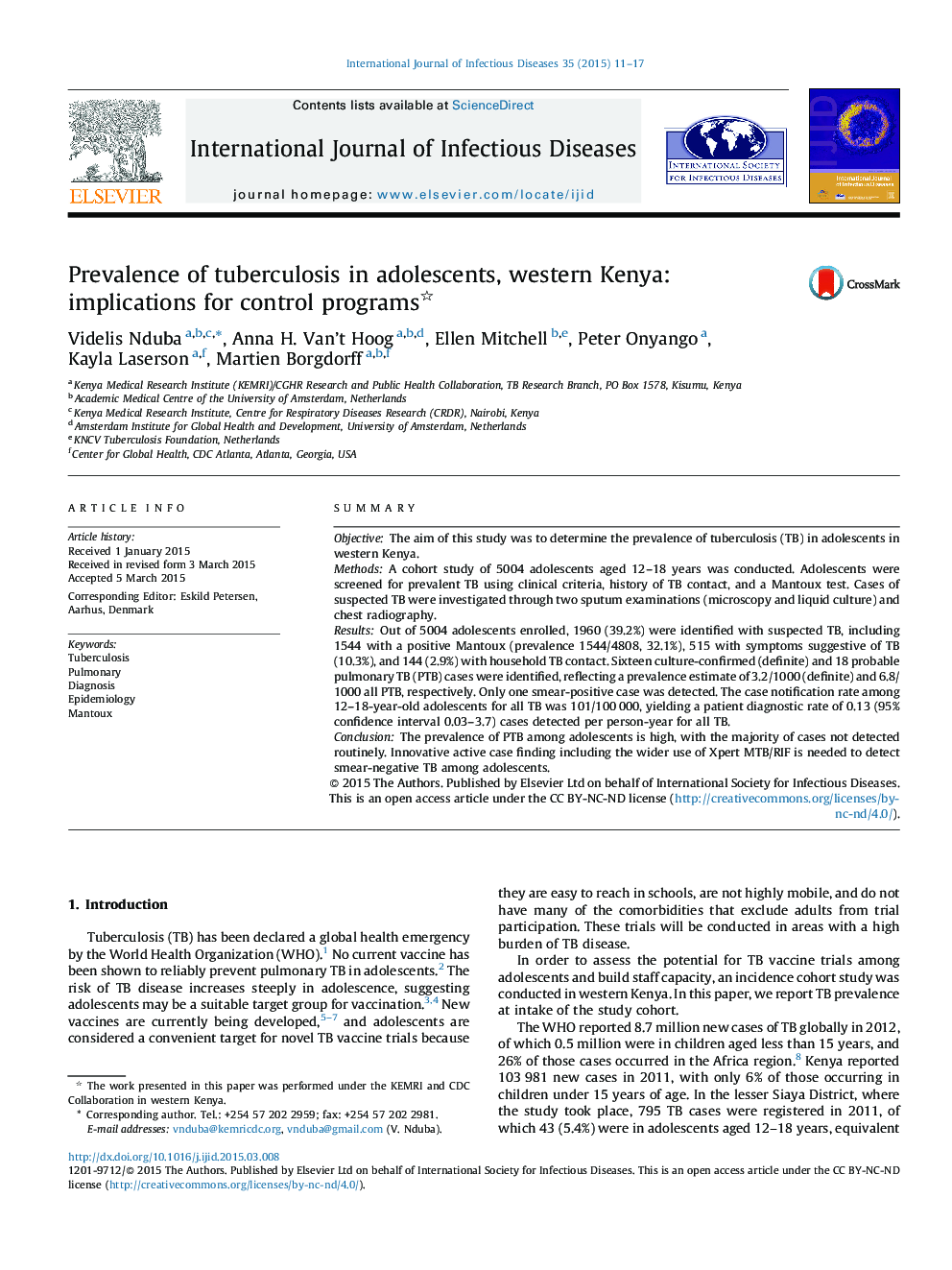| Article ID | Journal | Published Year | Pages | File Type |
|---|---|---|---|---|
| 3362073 | International Journal of Infectious Diseases | 2015 | 7 Pages |
•We enrolled adolescents to determine the prevalence of tuberculosis.•We found a high prevalence of TB among adolescents not explained by HIV.•We found a high burden of non-tuberculous mycobacteria, thus value of speciation.•There is a need to improve case detection among adolescents, e.g., with Xpert MTB/RIF.
SummaryObjectiveThe aim of this study was to determine the prevalence of tuberculosis (TB) in adolescents in western Kenya.MethodsA cohort study of 5004 adolescents aged 12–18 years was conducted. Adolescents were screened for prevalent TB using clinical criteria, history of TB contact, and a Mantoux test. Cases of suspected TB were investigated through two sputum examinations (microscopy and liquid culture) and chest radiography.ResultsOut of 5004 adolescents enrolled, 1960 (39.2%) were identified with suspected TB, including 1544 with a positive Mantoux (prevalence 1544/4808, 32.1%), 515 with symptoms suggestive of TB (10.3%), and 144 (2.9%) with household TB contact. Sixteen culture-confirmed (definite) and 18 probable pulmonary TB (PTB) cases were identified, reflecting a prevalence estimate of 3.2/1000 (definite) and 6.8/1000 all PTB, respectively. Only one smear-positive case was detected. The case notification rate among 12–18-year-old adolescents for all TB was 101/100 000, yielding a patient diagnostic rate of 0.13 (95% confidence interval 0.03–3.7) cases detected per person-year for all TB.ConclusionThe prevalence of PTB among adolescents is high, with the majority of cases not detected routinely. Innovative active case finding including the wider use of Xpert MTB/RIF is needed to detect smear-negative TB among adolescents.
